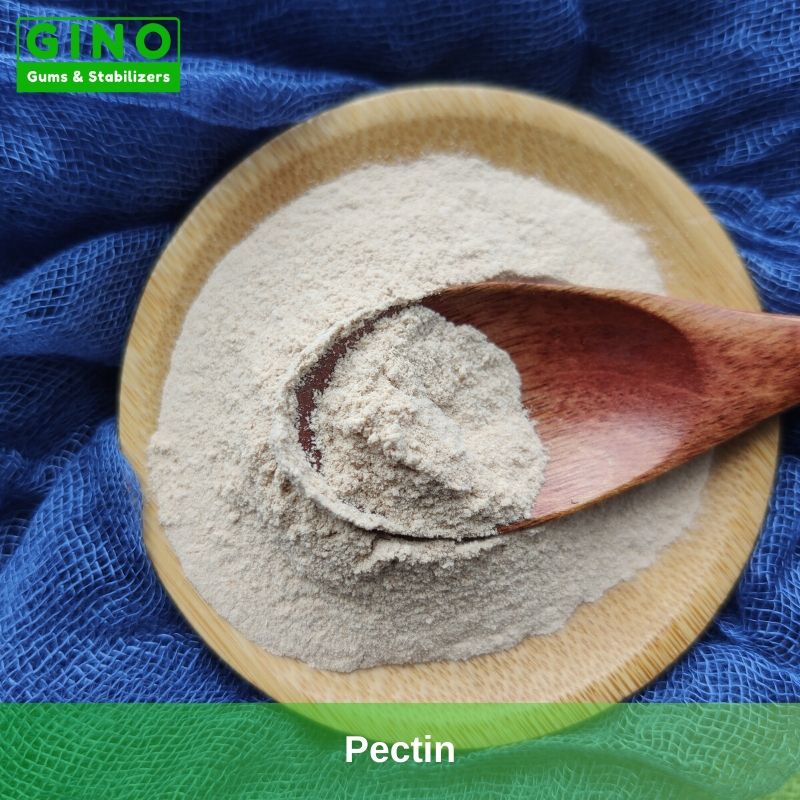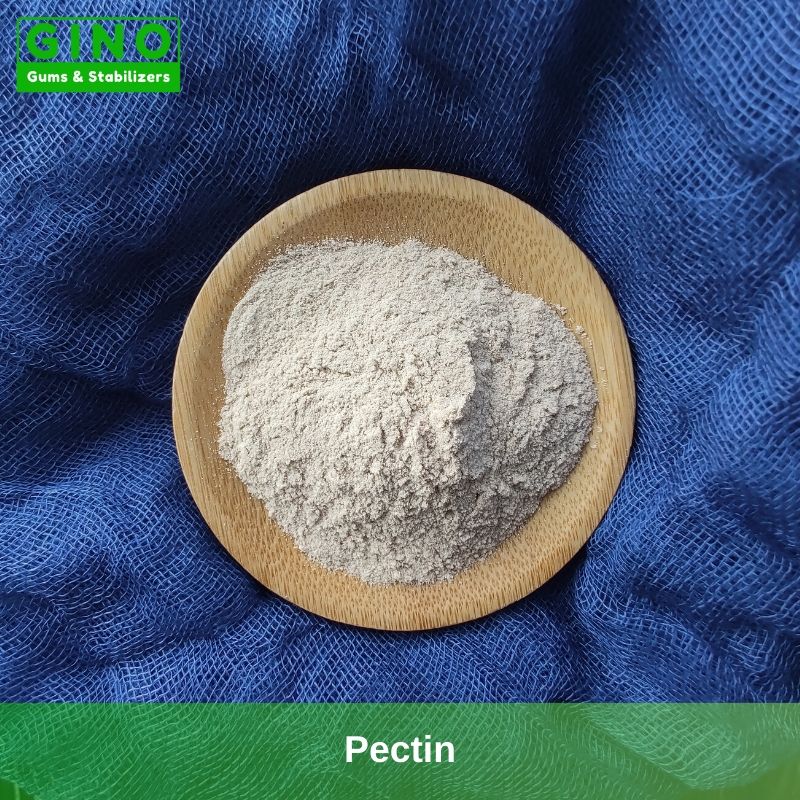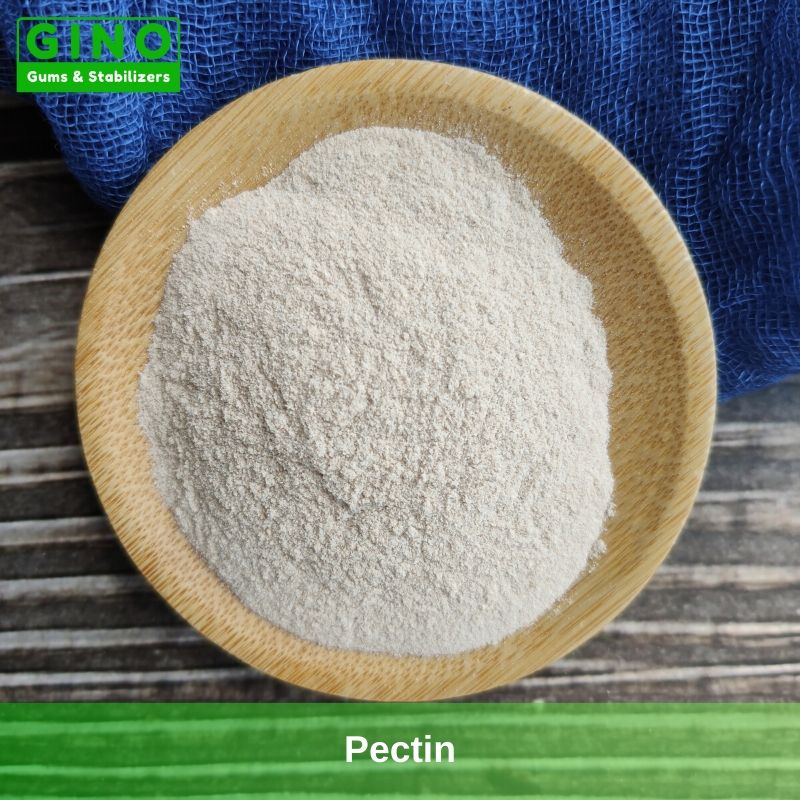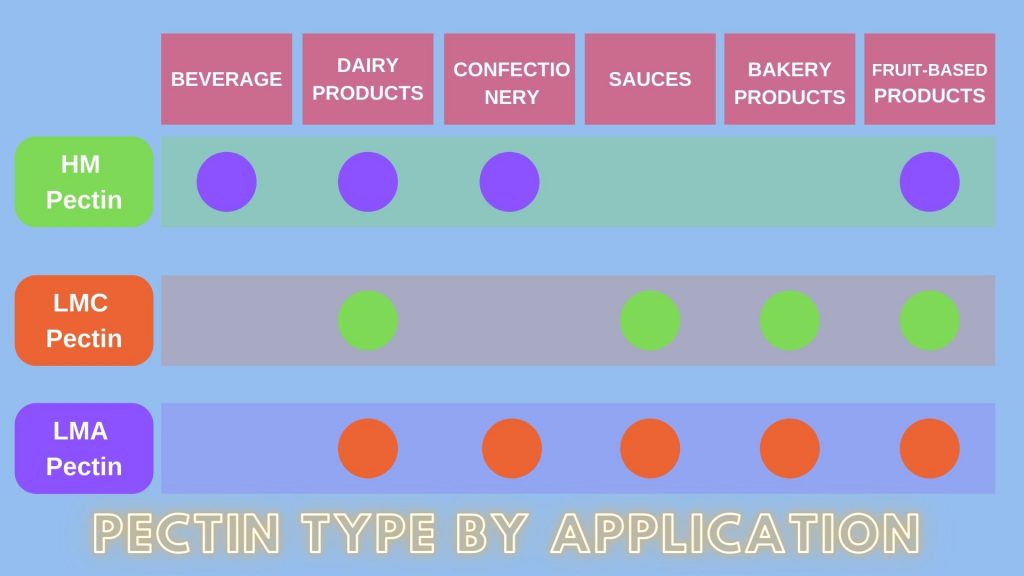Pectin
E440 Pectin Supplier & Manufacturer | Best Pectin Factory Plant in China
As one pectin supplier, exporter in China, Gino is dedicated to supplying superior products from reliable pectin manufacturer. Meanwhile, we can offer tailor-made solutions perfectly matched to your needs.
Pectin is a natural vegan hydrocolloid found in fruits. It is a key ingredient in jams and jellies and can be used as a fat replacer. It provides gelation, viscosity, texture and protein stability for a number of food applications.
Contact us to ask about a single hydrocolloid gum or food stabilizers (blends & systems) that would work for your products. Should you have any questions please feel free to send email to [email protected].




Pectin
| Category | Thickeners, Stabilizers |
|---|---|
| E Number | E440 |
| CAS No. | 9000-69-5 |
| H.S. Code | 1302200000 |
| Origin | China |
| MOQ | 500 KG |
| Packaging | Cartons, Bags |
| Payment Term | T/T, L/C |
GINO_Pectin Supplier | Pectin Manufacturer
What is Pectin?
Pectin, a natural polysaccharide, is commonly used as a gelling agent, thickener, emulsifier and stabilizer in food, European food additive number E440. It is made mainly from citrus peel and apple pomace and is commonly used in jams and jellies.
What is Pectin Made of?
Food grade pectin is a high molecular weight polysaccharide that consists of two parts: more than 65% galacturonic acid, and 35% other polysaccharides and some small amounts of monosaccharides.
Pectin Manufacturing Process
The basic principle of pectin extraction is to break down raw pectin (in the form of raw pectin, pectic acid, and pectate) into water-soluble pectin, which is then separated from cellulose, starch, protein, pigment, and other components.
Types of Pectin
There are three types of pectin if classified by degree of esterification (DE).
- High Methoxy Pectin (HMP). DE > 50% (typically 55-75%).
- Low Methoxy Pectin (LMP). DE < 50% (usually 20-40%)
- Low Methoxy-Amidated Pectin (LMAP): <25% amidation, 25%
- HMP and LMP have the same E number as E440i, while LMAP has a similar E number as E440ii.
High methyl-esterified forms gels in high soluble solids and acidic systems, whereas low methyl-esterified forms gels in a much broader pH and soluble-solids range, but requires the presence of divalent cations for gelling.
Commercial pectin is primarily extracted from citrus peel and apple pomace. If on the basis of origin, it can be divided into Apple Pectin and Citrus Pectin.
Our Product Range
- Which types of pectin we can provide for you?
Working with us | Choosing Your Right Pectin Supplier
You will enjoy all grades and forms of e440 pectin products, including:
Specification
| Sensory Characteristics: | |
| Appearance | Free flowing powder |
| Colour | Pale brown powder |
| Odour | Slight, free from off-notes |
| Taste | Slight, free from off-flavours |
| Chemical And Physical Characteristics: | |
| Pectin content | > 60% |
| Galacturonic acid | > 65% |
| Loss on drying | < 12% |
| Total Ash | < 5% |
| Acid-insoluble ash | < 1% |
| Nitrogen content | < 1% |
| SO2 | < 50ppm |
| Free methyl, ethyland isopropyl alcohol | < 1% |
| Heavy metals as lead | < 15ppm |
| Lead | < 5ppm |
| Arsenic | < 3ppm |
| Particle size | 1% retained on 300um |
| Microbiological Characteristics: | |
| Total plate count | < 1000 cfu/g |
| Yeast and mould | < 100 cfu/g |
| Coliforms | Absent in 1 g |
| E. coli | Absent in 1 g |
| Staphylococcus aureus | Absent in 1 g |
| Salmonella | Absent in 25 g |
Pectin Properties
Gel formation properties of pectin: The most important use of pectin is based on its ability to form gels.
HM pectin forms gels with sugar and acid.
LM pectin requires the presence of divalent cations for proper gel formation.
Pectin Advantages
- One of the attractive features is that the pH at which pectin has optimal stability matches the natural pH of fruit preserves. Compared to other hydrocolloids, this feature is unique to pectin.
- Another advantage is related to the texture which is physically and also organoleptically optimal.
- Finally, it gives an excellent flavor release due to its relatively small molecular weight when compared to other hydrocolloids.
Pectin Benefits
Pectin, along with three other ingredients such as cellulose, guar gum, and locust bean gum, is defined by the FDA as a dietary fiber that is beneficial to our health, with the following benefits.
- Lowers blood sugar/blood pressure
- Keeping cholesterol in the blood
- Relieves constipation
- Increase satiety and decrease energy intake
Pectin has the ability to reduce low-density lipoprotein (LDL) levels, thereby lowering cholesterol levels, and its ability to slow the passage of food through the intestine, relieving diarrhea. Pectin can also activate cell death pathways in cancer cells, indicating that pectins may play an important role in preventing certain types of cancer.
Pectin Structure
The basic structure of pectin consists mainly of D-galacturonic acid units, which are polymerized by α-1,4 glycoside linkages, with some of the carboxyl groups on the galacturonic acid residues in the form of methyl esters (methylated).
The remaining carboxyl groups on galacturonic acid are present as free acids or as salts of potassium, sodium, ammonium, and calcium.
The percentage of total galacturonic acid reflects the purity of the pectin, which should contain not less than 65% of food grade.
Pectin Uses - Applications
- What is pectin used for?
It is used as a gelling, thickening and stabilizing agent in foods and, to a lesser extent, in pharmaceuticals.
Basically, it is used to control water in products and help to create the desired texture.
- Its application is diverse and covers fruit-based products, dairy products, acidified milk drinks and other
beverages, confectionery, bakery products, various fine foods and spreads. - Additionally, it finds use in the pharmaceutical industry.
- Finally, increasing consumer awareness of healthy lifestyle habits and the emerging trend to produce functional foods increases the significance of the status of pectin as a water-soluble dietary fiber.
Pectin in Food
Pectin is widely used as a gelling agent in canned jams and jellies, and as a thickener, stabilizer and emulsifier in juices, bakery, confectionery and dairy products. It is also a source of dietary fiber. Global production reaches 60,000 tons per year, but demand still exceeds supply.
Pectin is also used in conjunction with other thickeners in food products such as gelatin, locust bean gum, modified food starch, agar agar, guar gum and gum arabic.
Pectin in Jam, Jellies, Preserves
The main use of pectin is in jams, jellies, i.e. in various fruit preserves.
Jam products are the traditional application of pectin, which improves the taste of jams, reduces cooking time, provides good flow, improves taste and color, and increases shelf life. The recommended use rate is approximately 0.2-0.3%.
Pectin is effective in improving mouthfeel, adding flavor, reducing assimilation and making jellies smooth and creamy.
HM pectin is used in traditional jams, jellies, and preserves with 65% to 75% S.S. and a final pH of 3.0 to 3.5, and usually contains 0.25% to 0.5% HM pectin. Depending on the content of soluble solids and package size, rapid set, medium rapid set and slow set HM pectin is available.
In the production of low-calorie jams, jellies, and preserves, LM pectin, especially LMA pectin, is used in combination with calcium salts to form rapid and uniform pectin-Ca2+ gels.
Acid Milk Drinks
Acidic milk drinks can be cultured, directly acidified or mixed with fruit juice. In the absence of stabilizers, protein precipitation and serum separation can occur, and pectin molecules can be protected by hydrophobic action and electrostatic repulsion to prevent aggregation of casein particles, thus achieving a longer shelf life.
HM pectin has a DE value of over 70% and can be used in acid milk beverages.
Beverages
Low calorie or low juice content beverages lose their viscosity due to the dissolution of sugar and have a thinner mouthfeel.
Pectin can help restore the desired mouthfeel by building a stable viscosity without adding any calories.
Pectin also increases the viscosity of the pulp in fruit juices and provides excellent turbidity stability to pulpy beverages. Pectin provides an unparalleled refreshing taste.
HM Pectin is uniquely advantageous in this application.
Pectin in Fruits Preparations
Soluble solids of 20 to 65% are required for general fruit pre-treatment. For good taste, soluble solids of 50 to 65% are required.
HM pectin is suitable for fruit preparations with more than 60% S.S. and a final pH of 3.5 or less.
LM pectin has a wider range of gelation in terms of pH and S.S.
Pectin is well suited for yogurt fruit preparation due to its pumpable texture and its ability to prevent fruit floating.
Pectin in Bakery Jelly
Bakery jellies require very high baking stability and low moisture activity to avoid the conversion of moisture from the filling to the dough.
Due to industrial use, pumpability (shear stability) and a spreadable texture become increasingly important.
Therefore, it is possible to choose between HM pectin with extra slow set solidification and LM pectin with high calcium reactivity.
Pectin in Ice cream
Pectin has emulsifying and stabilizing effect, which can make the finished product taste delicate and smooth. Recommended dosage: 0.1%-0.2%.
Confectionery
Pectin is an ideal gelling agent for the production of premium candies and chewing gum. It has a transparent appearance, gives an elastic texture, presents an excellent taste, is non-sticky and at the same time low in calories. Recommended usage: 1.5%-2.5%.
At the same time, it works synergistically with gelatin to avoid the low melting point that occurs when only gelatin is used, thus improving the stability of the candy.
As a texturing agent, pectin is widely used in the confectionery industry.
Pectin allows for a better release of flavor in confectionery and has a typical viscoelastic texture. For fruit-flavored candies, extra slow set HM pectin can be used, while for "neutral" flavored candies, buffered LM pectin is suitable for ultimately relatively high pH values.
Yoghurt
The purpose of adding pectin to yogurt is to improve taste, extend shelf life, provide a creamy, rich texture, and stabilize emulsions. Pectin improves the texture of yogurt and reduces the tendency of yogurt to assimilate.
The addition of pectin to a shaped yogurt improves the firmness of the yogurt, and stirring the yogurt results in a more creamy texture.
Both LMC and LMA can be used in yogurt products. It is generally recommended to add about 0.1%-0.2%.
Pectin in Jelly
Pectin has been used for many years to make high quality, tender, confectionery jellies with particularly good flavour release. Unlike some other products, pectin jellies can be manufactured to the desired final solids content and do not require stoving to remove excess moisture.
Pectin in Dressings & Glazes
Dressings are used after the dessert has cooled or frozen for a refreshing taste and appearance.
Glazes are usually reheated and diluted with water before application.
They are applied to baked goods to prevent them from drying out.
Therefore, a thermo-reversible gel is necessary to ensure a visco-elastic texture after use.
Clearly, LMA Pectin has the advantage of meeting all these requirements.
The recommended dosage is usually 1.0 to 1.5%.
Uses of Pectin in Pharmaceutical Industry
In addition to an increasing range of food uses, pectin has a number of applications in the pharmaceutical sphere.
Traditional use of pectin has been in diarrhea mixtures, often in conjunction with kaolin and sometimes bismuth compounds.
Pectin is also used to maintain the viscosity of some syrups.
Newer uses are as one of the hydrophobic fillers in self-adhesive colostomy flanges and in wound dusting powders and ulcer dressings where pectin appears to have some specific activity in promoting healing.

How to Use Pectin
- How to use pectin to make jelly
Pectin is the most crucial ingredient in making fruit jelly, it’s what creates the gelling effect that you’re aiming for.
For more info about how to make jelly with pectin, please click HERE.
Frequently Asked Questions
- See below for commonly asked questions about pectin
How much apple pectin should i take daily
The proper amount of apple pectin to use is not specified, although most manufacturers usually recommend a daily dose of between 1,000 mg and 1,400 mg. It's best to take it 30 minutes before a meal so it can bind to excess water, fat, or carbohydrates in the gut.
Is pectin safe? Is pectin healthy?
Yes, it has virtually no side effects and its safety has been recognized by the U.S. Food and Drug Administration (FDA) and the European Food Safety Authority (EFSA), as well as the Joint FAO/WHO Expert Committee on Food Additives (JECFA).
Is pectin safe for dogs?
Pectin is considered safe for dogs over sixteen weeks of age. However, you should always consult your veterinarian when making health decisions, not internet articles.
Is pectin safe during pregnancy?
In most people, including adults, children, and women who are pregnant or breastfeeding, pectin MAY be safe in the amounts taken in food; it MAY be safe when used in larger medicinal amounts.
Is modified citrus pectin safe?
Modified citrus pectin is considered generally safe (GRAS) by the U.S. Food and Drug Administration (FDA). There were only mild side effects reported in clinical studies, including bloating, gas and loose stools.
Is pectin vegan? Is pectin vegetarian?
Yes, pectin is vegan, as it occurs naturally in fruit and no animal-derived products are used in its manufacture, making it suitable for a vegan diet.
Is pectin Halal?
Yes, pectin is a halal food, in line with Muslim policy.
Is pectin Kosher?
Yes, pectin can also be approved for Kosher. Our gellan gum manufacturer could also provide Kosher certificate.
Is pectin bad for you?
Pectin isn’t bad for you. But pectin needs a lot of sugar to work - about two-thirds to one-half of the jam you use it in.
High sugar content is standard in jams and jellies, but that sugar is still bad for you: it can rot your teeth, add to your weight through blood sugar spikes, and put you at risk for long-term diseases like diabetes.
Be aware of your sugar intake and use your best dietary judgment when consuming products that contain pectin. Of course, pectin is a fiber, so it will reduce some of the high sugar content.
Is pectin gluten free?
Yes, it is gluten-free because it does not contain wheat, rye, barley or hybrids of these grains.
What are pectin nutrition facts?
Pectin is a fiber and contains almost no calories or nutrients.
What are pectin side effects?
Pectin can cause stomach cramps, diarrhea, gas, and loose stools.
What are e440 pectin substitute?
- Citrus peels. Citrus peels—especially the white part, or pith—are naturally packed with pectin. ...
- Corn starch. Corn starch is a natural thickener that works as a seamless substitute for pectin.
- Gelatin. Gelatin is a viable option for non-vegans or non-vegetarians.
- Extra sugar.
- Related Products
- Contact Form
Pectin is a natural vegan hydrocolloid found in fruits, Gino is a professional apple pectin and citrus pectin supplier and manufacturer in China.
So, please complete the fields below to get the latest price.




